
Death in the Line of Duty...A report from the NIOSH Fire Fighter Fatality Investigation and Prevention Program
F2015-20 Date Released: February 27, 2017
Executive Summary
On December 19, 2015, a 19-year-old male volunteer fire fighter
(lieutenant in rank) with Department 41 died after inhaling super-heated
gases in the basement at a residential structure fire. Department 19
was dispatched for a chimney fire in a residential structure at 1859
hours. Per predefined mutual aid agreements, Department 41 was
dispatched for FAST (fire fighter assistance and search team)
operations.
The Department 41 Rescue Truck 4120, with the second
assistant chief, the lieutenant, and an exterior fire fighter on-board,
arrived first on-scene at 1910 hours. The Department 41 second assistant
chief radioed Dispatch and reported a working fire. The Department 19
chief arrived next, followed by Engine 1910, with a lieutenant and one
fire fighter onboard. The Department 19 chief assumed incident command
and requested a second alarm.
The Department 19 lieutenant pulled a
preconnected 1¾-inch hoseline to the front door. The Department 41
second assistant chief and lieutenant grabbed two self-contained
breathing apparatus from Engine 1910 and joined the Department 19
lieutenant on the hoseline. They donned their facepieces on the front
porch, went on air, and proceeded inside and found fire burning up the
walls behind a wood stove located near the center of the Side C wall.
After knocking down the fire and pulling ceilings, the hoseline crew
went outside. The Department 19 lieutenant reported to the incident
commander while the Department 41 second assistant chief and lieutenant
went to size up the basement. They found a basement door near the A-D
corner and entered the basement about 10–15 feet.
They found fire
burning in the basement at the C-D corner and returned outside to get a
hoseline. Soon after re-entering the basement with a charged hoseline,
the Department 41 second assistant chief realized his lieutenant was
missing and stepped outside to ask if anyone had seen the lieutenant. He
reported the lieutenant as missing to a nearby chief. The FAST was
activated and rescuers reentered the basement.
The lieutenant was found
on his knees, facing Side C near an open door leading to a utility room
containing active fire. The lieutenant indicated he needed assistance.
As the lieutenant was dragged outside, he became unresponsive. He
received medical assistance and was transported to a local hospital
where he was pronounced dead.
Cause of Death
According to the medical examiner’s report, the cause of death was asphyxia due to inhalation of heated products of combustion. The autopsy found second-degree radiant burns completely covering the nose with smaller burns on the left ear and near the center of the forehead in line with the eyebrows.
Contributing Factors
- Lack of crew integrity
- Improper SCBA use
- Inexperienced fire fighter
- Special service vehicle not equipped with SCBA
- Lack of training on fire dynamics
Key Recommendations
- Fire departments should ensure that crew integrity is
properly maintained by visual (eye-to-eye), direct (touch), or verbal
(voice or radio) contact at all times when operating in an immediately
dangerous to life and health (IDLH) atmosphere.
- Fire departments should ensure that special service
vehicles are equipped with the appropriate equipment as specified in
NFPA 1901 Standard on Automotive Fire Apparatus.
- Fire departments should ensure that fire fighters wear a
full array of turnout clothing and personal protective equipment
appropriate for the assigned task while participating in fire
suppression and overhaul activities.
- Fire departments should ensure that Mayday training
programs are developed and implemented so that fire fighters are
adequately prepared to call a Mayday.
Additionally,
- Standard setting organizations, enforcement agencies,
and authorities having jurisdiction should consider developing,
implementing, and enforcing national fire fighter and fire officer
training standards and requirements.
Recommendations
Recommendation #1: Fire departments should ensure that crew integrity is properly maintained by visual (eye-to-eye), direct (touch), or verbal (voice or radio) contact at all times when operating in an immediately dangerous to life and health (IDLH) atmosphere.
Discussion: When a crew enters a structure, the members should remain in contact by visual (eye-to-eye), verbal (radio or person-to-person), or direct (by touch) contact. NFPA 1500 Standard on Fire Department Occupational Safety and Health Program states in Paragraph 8.5.5, "Crew members operating in a hazardous area shall be in communication with each other through visual, audible, or physical means or safety guide rope, in order to coordinate their activities." Additionally, NFPA 1500 Paragraph 8.5.6 states, "Crew members shall be in proximity to each other to provide assistance in case of an emergency" [NFPA 2013b].
The International Association of Fire Chiefs, Safety, Health, and Survival Section has redefined the Rules of Engagement for Structural Fire Fighting. One of the objectives is to ensure that fire fighters always enter a burning building as a team of two or more members and no fire fighter is allowed to be alone at any time while entering, operating in, or exiting a building. A critical element for fire fighter survival is crew integrity. Crew integrity means fire fighters stay together as a team of two or more. They must enter a structure together and remain together at all times while in the interior, and all members come out together. Crew integrity starts with the company officer ensuring that all members of the company understand their riding assignment, have the proper personal protective equipment, and have the proper tools and equipment. Upon arrival at the incident, the company is given a task to perform by the incident commander. The company officer communicates to the members of the company what their assignment is and how they will accomplish their assignment. As the members of a company enter a hazardous environment together, they should leave together to ensure that crew integrity is maintained. If one member has to leave, the whole company leaves together [IAFC 2012].
It is the responsibility of every fire fighter to stay in communication with crew members at all times. All fire fighters should maintain the unity of command by operating under the direction of the incident commander, division/group supervisor, or their company officer at all times. The ultimate responsibility for crew integrity and ensuring no members get separated or lost rests with the company officer. They should maintain constant contact with their assigned members by visual observation, voice, or touch while operating in a hazard zone. They should stay together as a company or crew. If any of these elements are not adhered to, crew integrity is lost and fire fighters are placed at increased risk. If a fire fighter becomes separated and cannot re-connect with his/her crew immediately, the fire fighter should attempt to communicate via portable radio with the company officer. If reconnection is not accomplished after three radio attempts or reconnection does not take place within 1 minute, a Mayday should be declared. If conditions are rapidly deteriorating, the Mayday should be declared immediately. As part of a Mayday declaration, the fire fighter should next activate the radio's emergency alert button (where provided), followed by manually turning on the PASS alarm. Similarly, if the company officer or the fire fighter's partner recognizes they have a separated member, they should immediately attempt to locate the member by using their radio or by voice. If contact is not established after three attempts or within 1 minute, a Mayday should be declared immediately [IAFC 2012].
In this incident, it was reported that three fire fighters entered the basement as a hoseline crew. Very soon after entering the basement, the nozzle man (Department 41 second assistant chief) realized that the lieutenant was not behind him and began to call out for him. The Department 41 second assistant chief went outside and reported to the Department 66 first assistant chief that the lieutenant was missing. The FAST Team was activated and the lieutenant was found shortly after rescuers re-entered the basement.
Recommendation #2: Fire departments should ensure that all fire fighters are trained in and recognize the importance of situational awareness.
Discussion: The book, Essentials of Fire Fighting and Fire Department Operations, defines situational awareness as an awareness of the immediate surroundings [IFSTA 2008]. On the fireground, every fire fighter should be trained to be constantly alert for changing and unsafe conditions. This applies not only to the conditions found within a burning structure, but to the exterior fireground as well. Fire fighters may encounter a wide variety of surface features that they must walk across while performing fireground tasks. For example, surfaces may be wet, slippery, ice-covered, or uneven and may be vegetation-covered or include debris from the burning structure. Downed power lines, broken or leaking natural gas meters and distribution lines, unstable structures, and other environmental factors are just some of the hazards that may be present on the fireground.
One of the most critical aspects of coordination between crews is maintaining situational awareness. The opposite of situational awareness is tunnel vision where the fire fighters become so focused on fire fighting or other operational assignments that they fail to sense changes in their environment. Fire fighters can maintain their situational awareness by looking up, down, and around themselves as well as listening for new or unusual sounds and feeling vibrations or movement. Fire fighters and officers should communicate any changes in their environment to other members as well as to the incident commander. Each first responder is responsible for their safety plus the personnel they are working with. Maintaining situational awareness protects against complacency and tunnel vision. The incident scene creates a significant risk to fire fighters, and it is the responsibility of the incident commander and command organization officers to minimize fire fighter exposure to unsafe conditions and stop unsafe practices [IAFC 2012].
In this incident, the Department 41 lieutenant became separated from the hoseline crew soon after the three-person crew entered the basement. For unknown reasons, the Department 41 lieutenant did not radio a Mayday or activate his PASS device. The lieutenant inhaled super-heated gases and products of combustion and did not survive his injuries.
Recommendation #3: Fire departments should ensure that special service vehicles are equipped with the appropriate equipment as specified in NFPA 1901 Standard on Automotive Fire Apparatus.
Discussion: NFPA 1901 Standard on Automotive Fire Apparatus specifies the minimum equipment and tools to be carried on automotive fire apparatus. Chapter 6 “Initial Attack Fire Apparatus,” Chapter 8 “Aerial Fire Apparatus,” Chapter 9 “Quint Fire Apparatus,” and Chapter 10 “Special Service Fire Apparatus” all require that at least one self-contained breathing apparatus (SCBA) be provided for each assigned seating position on the apparatus [NFPA 2016]. Fire departments should ensure that all in-service apparatus to be dispatched to an emergency situation are equipped with at least the minimum requirements specified in NFPA 1901.
In this incident, Department 41 members were participating in a community holiday function when they were dispatched. Fire department apparatus Engine 4110 and Rescue 4120 were located at the community function at the time of the dispatch. Rescue 4120 was used by Department 41 as a rescue vehicle and brush truck. It does not carry its own water supply. Rescue 4120 was not equipped with SCBA. Rescue 4120 was the first fire apparatus to arrive at the scene of the structure fire, followed by the Department 19 chief and Department 19’s Engine 1910. Two of the Department 41 fire fighters (including the Department 41 lieutenant) joined with the Department 19 lieutenant who had arrived on Engine 1910 to form the entry team. Since Rescue 4120 was not equipped with SCBA, the two Department 41 fire fighters took SCBA from Engine 1910. The Department 41 lieutenant was not trained or fit-tested on the model of SCBA used by Department 19.
Recommendation #4: Fire departments should ensure that fire fighters wear a full array of turnout clothing and personal protective equipment appropriate for the assigned task while participating in fire suppression and overhaul activities.
Discussion: NFPA 1500 Standard on Fire Department Occupational Safety and Health Program, Chapter 7, contains the general recommendations for fire fighter protective clothing and protective equipment [NFPA 2013b]. Chapter 7.1.1 specifies that “the fire department shall provide each member with protective ensembles, ensemble elements and protective equipment that is designed to provide protection from the hazards to which the member is likely to be exposed and is suitable for the tasks that the member is expected to perform.”
Chapter 7.1.2 states, “Protective ensembles, ensemble elements and other protective equipment shall be used whenever the member is exposed or potentially exposed to the hazards for which it is provided.” Chapter 7.1.3 states, “Structural fire-fighting and proximity fire-fighting protective ensembles and ensemble elements shall be cleaned at least every 6 months as specified in NFPA 1851 Standard on Selection, Care, and Maintenance of Structural Fire Fighting Protective Ensembles [NFPA 2014b].” Chapter 7.2.1 states, “Members who engage in or are exposed to the hazards of structural fire fighting shall be provided with and shall use a protective ensemble that shall meet the applicable requirements of NFPA 1971 Standard on Protective Ensembles for Structural Fire Fighting and Proximity Fire Fighting [NFPA 2013c].”
Chapter 7.10.7 states, “When engaged in any operation where they could encounter atmospheres that are immediately-dangerous-to-life-or-health (IDLH) or potentially IDLH, or where the atmosphere is unknown, the fire department shall provide and require all members to use SCBA that has been certified as being compliant with NFPA 1981 Standard on Open-Circuit Self-Contained Breathing Apparatus for Fire and Emergency Services” [NFPA 2013d]. Additionally, the OSHA Respirator Standard requires that all employees engaged in interior structural fire fighting use SCBAs [OSHA 1998]. Additionally, SCBA are required to have integrated personal alert safety systems (PASS) devices meeting the requirements of NFPA 1982 Standard on Personal Alert Safety Systems (PASS) [NFPA 2013e].
During this incident, the Department 41 lieutenant inhaled super-heated gases and products of combustion, which led to his death. It was unclear as to whether or not he had on his facepiece when he entered the basement. Documented burn injuries to his nose, forehead, and left ear were consistent with wearing a fire helmet but not wearing a facepiece or protective hood. The lieutenant also did not activate his integrated PASS device, possibly due to unfamiliarity with the SCBA he was using. The SCBA used by the lieutenant was not positively identified so NIOSH was unable to test an SCBA as part of this investigation.
Recommendation #5: Fire departments should ensure that fire fighters are properly trained with the specific SCBA that they are using and also in SCBA repetitive skills training and out-of-air SCBA emergencies.
Discussion: Muscle memory, repetitive skill coordination in the operational use of specific SCBA is a learned skill that fire fighters must master for each manufacturer/model of SCBA they are trained to use. Fire fighters should never enter an IDLH atmosphere using an SCBA that they are not trained on, fit-tested for, and thoroughly familiar with.
Fire Fighters need to understand and be thoroughly familiar with the specific SCBA model that they are using. It is critically important when a department changes manufacturer or model that they provide extensive time and experience in training with the new model. If fire fighters have “muscle memory, repetitive skills training” based on the manufacturer’s operational instructions, they would be more able to overcome an out-of-air emergency involving their SCBA. In the aviation industry, this skill building is sometimes referred to as cockpit time. Although a pilot may have extensive experience in one aircraft, he/she needs to have sufficient “cockpit time” in the plane that they are presently flying in order to overcome and control an unanticipated issue. In the same way, a fire fighter must have sufficient “cockpit time” with their SCBA because they operate in an IDLH environment and there is little time to react so the responses have to be learned and automatic. Although the principles of different SCBA manufacturers and models may be the same, the controls, visual and audio signals, and the valves and their locations are different for all models.
Repetitive skills training with SCBA is vital for fire fighters working inside an IDLH atmosphere. SCBA skills training is an ongoing process that should be performed regularly to ensure that fire fighters “know their SCBA.” The benefits of repetitive skills training with SCBA are an increased comfort and competency level, decreased anxiety, lower air consumption, increased awareness of the user’s air level (noticing and using the heads-up display [HUD]), and an automatic muscle memory response of the vital function controls, such as the don/doff buttons, main air valve, emergency bypass operating valve, and auxiliary air connections (i.e., rapid intervention crew/universal air connection [RIC/UAC] and the buddy breather connection). Repetitive skills training can also provide the user with an increased ability to operate these functions and controls in a high-anxiety moment or an emergency. Many times these skills will be necessary with gloved hands, limited vision, and reduced ability to hear commands from others. Performed in conditions that are non-IDLH, repetitive skills training helps build the fire fighters’ muscle memory skills so their hands will be able to activate the controls with gloves on and the operation will be a conditioned or second-nature response. Fire fighters have died in IDLH conditions because they did not react properly to an out-of-air emergency [NIOSH 2011, 2012b]. In this incident, the SCBA used by the Department 41 lieutenant was never positively identified.
Overcoming out-of-air emergencies is an important goal of repetitive skills training. Fire fighters also need to understand the psychological and physiological effects of the extreme level of stress encountered when they run low on air or become lost, disoriented, injured, or trapped during rapid fire progression. Most fire training curricula do not include discussion of the psychological and physiological effects of extreme stress, such as encountered in an imminently life-threatening situation, nor do they address key survival skills necessary for effective response. Understanding the psychology and physiology involved is an essential step in developing appropriate responses to life-threatening situations. Reaction to the extreme stress of a life-threatening situation, such as being trapped, can result in sensory distortions and decreased cognitive processing capability [Grossman and Christensen 2008]. In the book Stress and Performance in Diving, the author notes that while all training is important: “We know that under conditions of stress, particularly when rapid problem-solving is crucial, over-learning responses is essential. The properly trained individual should have learned coping behavior so well that responses become virtually automatic, requiring less stop and think performance” [Bachrach and Egstrom 1987; NIOSH 2013a].
All SCBA come with a user’s manual. Fire fighters need to take the time and read these manuals, independent of the training they are given, and then practice with considerable repetitive skill building. Reading the user’s manual provides only the baseline knowledge in the operational characteristics. The skill comes from considerable repetitive muscle memory training and is specific to each manufacturer and model. These skills are vital to the fire fighter to assist him/her in overcoming an out-of-air emergency with the SCBA that they are wearing. Although most all of the air function principles are similar, the control locations and operations can be totally different.
The first two fire departments that responded to this incident were part of a county-wide mutual aid plan that identified a mutual aid department to respond as the FAST Team at all working structure fires. During this incident, the first fire fighters on-scene arrived in Rescue 4120, which did not carry any self-contained breathing apparatus. When Engine 1910 arrived on-scene, the Department 41 fire fighters grabbed SCBA from Engine 1910 that were not the same make and model as what they regularly trained on. The Department 41 second assistant chief reported to NIOSH investigators that he was familiar with the operation and use of the Department 19 SCBA. The Department 41 lieutenant was fit-tested with a size large facepiece. The SCBA that he was reported to be wearing was a different manufacturer and had a size medium facepiece. Autopsy information suggested that he did not have a facepiece on when he inhaled superheated gases and products of combustion. The SCBA used by the lieutenant was not positively identified so NIOSH was unable to test an SCBA as part of this investigation.
Recommendation #6: Fire departments should ensure that fire fighters are trained to activate their personal alert safety system (PASS) devices whenever they are in imminent danger.
Discussion: Every fire fighter who may be required to enter an immediately dangerous-to-life-or-health (IDLH) environment should be equipped with a personal alert safety system (PASS) device meeting the requirements of the NFPA 1982 Standard on Personal Alert Safety Systems (2013 edition or the latest edition) [NFPA 2013e].
NFPA 1500 Standard on Fire Department Occupational Safety and Health Program (2013 edition), Chapter 7.1, states, “The fire department shall provide each member with protective ensembles, ensemble elements, and protective equipment designed to provide protection from hazards to which the member is likely to be exposed and that is suitable for the tasks the member is expected to perform” [NFPA 2013b]. Chapter 7.2.1 states, “Members who engage in or are exposed to the hazards of structural fire fighting shall be provided with and shall use a protective ensemble that shall meet the applicable requirements of NFPA 1971 Standard on Protective Ensembles for Structural Fire Fighting and Proximity Fire Fighting” [NFPA 2013c].
NFPA 1500, Chapter 7.16.2, states, “Each member shall be provided with, use, and activate his or her PASS devices in all emergency situations that could jeopardize that person’s safety due to atmospheres that could be IDLH, in incidents that could result in entrapment, in structural collapse of any type, or as directed by the incident commander or the incident safety officer.” Annex A to NFPA 1500 (A7.16.2) states:
The mandatory use and operation of a PASS by fire fighters involved in rescue, fire suppression, or other hazardous duty is imperative for their safety. The primary intent of this device is to serve as an audible device to warn fellow fire fighters in the event a fire fighter becomes incapacitated or needs assistance. Previous fire fighter fatality investigation reports document the critical need to wear and operate PASS devices when fire fighters operate in hazardous areas. Investigation results show that fire fighters often failed to activate the PASS unit prior to entering a hazardous area. Training and operational procedures are imperative to ensure activation of the PASS whenever PASS devices are used.
In this incident, the Department 41 lieutenant was wearing a self-contained breathing apparatus that contained an integrated PASS device. He did not manually activate his integrated PASS device, and his radio was not equipped with an emergency button. There was no evidence that the Department 41 lieutenant attempted to transmit a Mayday over his radio. The integrated PASS device was not sounding at the time the lieutenant was found in the basement and removed by rescuers. The rescuers might have identified his location sooner if the PASS device had been manually activated.
Recommendation #7: Fire departments should ensure that all task-level operations are conducted with the approval of the incident commander within the framework of an incident action plan.
Discussion: Although there is no evidence that freelancing contributed to this line-of-duty death, this recommendation is presented as best practice for all fire fighters operating on the fireground. An important part of the safe fireground operations is ensuring that all task-level operations and activities are conducted within the framework of the approved incident action plan (IAP). Failure to work within the framework of the IAP is called freelancing [Dodson 2007]. An IAP is defined as a written or unwritten plan for managing an emergency [IFSTA 2008].
The incident commander is responsible for assembling an IAP that is implemented by organized teams performing specific tasks. These tasks are assigned to organized teams in the form of orders. Each team is responsible for carrying out the order and providing updates to the incident commander on a regular basis. Additionally, the team must relay information about any pertinent hazards or conditions that may be important to the overall IAP [Delmar 2000].
In the fire service, freelancing is often viewed as a dangerous, risk-taking action. Fire fighters have been seriously injured and killed while engaging in a freelance operation [Dodson 2007]. By definition, freelancing is an operation or task being performed unknown to the incident commander or other working crews [Dodson 2007]. Freelancing is often attributed to a lone worker, although the term can be applied equally to a rogue crew that has decided to engage in a particular task. Freelancing, either by an individual or a crew, can be deadly [Dodson 2007].
Incident commanders, sector or division officers, chief officers, safety officers, company officers, and individual fire fighters can use their basic knowledge of fireground operations to predict situations that can lead to freelancing. One of the most obvious forms of freelancing is a crew in staging or assigned as a rapid intervention crew that wants to get to where the action is.
In this incident, the Department 41 lieutenant became separated from the hoseline crew soon after the three-person crew entered the basement. The lieutenant inhaled super-heated gases and products of combustion. Once it was realized that the lieutenant was missing, he was quickly located and removed from the basement but succumbed to his injuries. The rescuers might have identified his location sooner if the PASS device had been manually activated.
Recommendation #8: Fire departments should ensure that Mayday training programs are developed and implemented so that fire fighters are adequately prepared to call a Mayday.
Discussion: The first and foremost priority for fire fighter safety is not getting oneself into a situation that could potentially cause injury or death. The fire fighter must maintain situational awareness at all times while operating on the fireground. Fire fighters must understand that when they are faced with a life-threatening emergency, there is a very narrow window of survivability, and any delay in egress and/or transmission of a Mayday message reduces the chance for a successful rescue. Knowledge and skill training on how to prevent a Mayday situation and how to call a Mayday should begin and be mastered before a fire fighter engages in fireground activities or other immediately dangerous to life and health environments. Beginner fire fighter training programs should include training on such topics as air management; familiarity with an SCBA, a radio, or PPE; crew integrity; reading smoke, fire dynamics, and fire behavior; entanglement hazards; building construction; and signs of pending structural collapse.
Fire fighters must be able to recognize when they find themselves in a questionable position (whether immediately dangerous or not) and be trained on procedures for when and how a Mayday should be called. A fire fighter’s knowledge, skill, and ability to declare a Mayday must be at the mastery level of performance. This performance level should be maintained throughout their career through training offered more frequently than annually [IAFF 2012].
Fire departments must understand that each fire fighter may have a different interpretation of what is life-threatening. The ability of a fire fighter to call a Mayday is a complicated behavior that includes the affective, cognitive, and psychomotor domains of learning and performance [Clark 2005; Grossman and Christensen 2008]. Any delay in calling a Mayday reduces the chance of survival and increases the risk to other fire fighters trying to rescue the downed fire fighter. This incident illustrates the need for fire fighters to be given specific training on determining when a Mayday must be called.
No rules are established for determining when a Mayday must be called, and Mayday training is not included in the job performance requirements in NFPA Fire Fighter I or II standards. It is up to the authority having jurisdiction to train members for emergency operations [NFPA 2013a, b] and to develop rules and performance standards for a fire fighter to call a Mayday. The National Fire Academy (NFA) has an on-line course addressing the fire fighter Mayday doctrine: Q133 Firefighter Safety, Calling the Mayday, a 2-hour program covering the cognitive and affective learning domain of the fire fighter Mayday doctrine [Clark 2005]. The NFA course H0134 Calling the Mayday: Hands-on Training, an 8-hour course covering the psychomotor learning domain of the fire fighter Mayday doctrine, was handed off to state fire training academies and metro fire departments [Clark 2008]. These courses are based on the military methodology used to develop and teach ejection doctrine to fighter pilots. The NFA Mayday courses present specific Mayday parameters or rules for determining when a fire fighter must call a Mayday. The courses may help fire departments in developing and teaching Mayday procedures for fire fighters. Also, NFPA 1001 Standard for Fire Fighter Professional Qualifications includes job performance requirements related to the fire fighter calling for assistance (such as a Mayday situation) [NFPA 2013a].
The International Association of Fire Fighters (IAFF) Fire Ground Survival program is another resource for fire departments and was developed to ensure that training for Mayday prevention and Mayday operations is consistent among all fire fighters, company officers, and chief officers [IAFF 2012].
Any Mayday communication must contain the location of the fire fighter in as much detail as possible and, at a minimum, should include the division (floor) and quadrant. It is imperative that fire fighters know their location when in IDLH environments at all times to effectively be able to give their location in the event of a Mayday. Once in distress, fire fighters must immediately declare a Mayday. The following example uses LUNAR (Location, Unit, Name, Assignment/Air, Resources needed) as a prompt: "Mayday, Mayday, Mayday, Division 1 Quadrant C, Engine 71, Smith, search/out of air/vomited, can't find exit." When in trouble, a fire fighter's first action must be to declare the Mayday as accurately as possible. Once the incident commander and rapid intervention team (RIT) know the fire fighter's location, the fire fighter can then try to fix the problem, such as clearing the nose cup, while the RIT is en route for rescue [USFA 2006].
A fire fighter who is breathing carbon monoxide (CO) quickly loses cognitive ability to communicate correctly and can unknowingly move away from an exit, other fire fighters, or safety before becoming unconscious. Without the accurate location of a downed fire fighter, the speed at which the RIT can find them is diminished, and the window of survivability closes quickly because of lack of oxygen and high CO concentrations in an IDLH environment [Clark 2005, 2008; USFA 2006].
In this incident, the Department 41 lieutenant became separated from the hoseline crew soon after the three-person crew entered the basement. The lieutenant inhaled super-heated gases and products of combustion. The nozzle man on the hoseline (Department 41 second assistant chief) began to look for the missing lieutenant and stepped outside the basement and reported the missing lieutenant to a nearby first assistant chief from Department 66. The Department 66 first assistant chief advised the Department 66 chief who radioed a Mayday. The identification and last known location of the missing lieutenant were not immediately reported. It is unknown if the Department 41 lieutenant would have been able to call a Mayday, but he did speak briefly with rescuers when he was located.
Recommendation #9: Fire departments should integrate current fire behavior research findings developed by the National Institute of Standards and Technology (NIST) and Underwriter’s Laboratories (UL) into operational procedures by developing or updating standard operating procedures, conducting live fire training, and revising fireground tactics.
Discussion: The National Institute of Standards and Technology (NIST) and Underwriters Laboratories (UL) have conducted a multi-year series of live burn experiments designed to replicate conditions in modern homes and residential structures to validate previous testing done in laboratory settings. The results of these experiments provide fire fighters with assessment tools to better recognize, predict, and react to fires involving new materials and construction. The fire research experiments were conducted in cooperation with the Fire Department of New York, Chicago Fire Department, Spartanburg South Carolina Fire and Rescue, and other agencies. The live burn tests are aimed at quantifying emerging theories about how fires are different today, largely due to new building construction and the composition of home furnishings and products. In the past, these products were mainly composed of natural materials, such as wood and cotton. Today’s products contain large quantities of petroleum- based products and synthetic materials that burn faster and hotter and generate large volumes of fuel-rich smoke. Where a fire in a room once took approximately 20 minutes to flashover (igniting all the contents) today’s furnished rooms reaches flashover in as little as 4 to 5 minutes [NIST, UL 2013].
Modern living spaces tend to be more open, less compartmentalized and better insulated than homes built years ago. As a result, interior residential fires can generate oxygen-depleted, fuel-rich environments within minutes. This fire condition of hot, fuel-rich smoke is highly reactive to the introduction of oxygen. Opening a door or venting a window introduces massive quantities of oxygen to this environment, which promotes explosive and rapid transition to flashover. These same conditions can occur in commercial structures as seen in the fire at the Charleston, South Carolina, Sofa Super Store [NIOSH 2009a].
The NIST and UL experiments evaluated individual and combinations of methods for strategically ventilating and isolating fires to delay and/or prevent flashover. In contrast, kicking a door open or breaking a window (particularly large surface windows like panes found in sliding glass doors) without knowledge of conditions inside creates a portal for air that introduces immense quantities of oxygen into an oxygen-limited, high-heat, fuel-rich, fire environment.
Fire suppression operations have traditionally been conducted using the interior attack as a means to reduce water damage and limit fire damage to structures. These operations must be coordinated with ventilation operations to reduce the risk to fire fighters working in the interior. Previous research and examinations of line-of-duty deaths have shown that uncoordinated ventilation events occurring with fire fighters in the structure prior to suppression have led to tragic results [NIOSH 2009a, 2012a, 2013b]. One means of eliminating the possibilities of this occurrence is the use of a transitional attack. The transitional attack directs a fire stream into the structure from the exterior to cool superheated fire gases and reduce the heat release rate of the fire prior to the fire fighters entering the building. Two major concerns with the transitional attack are the potential harm that might occur to people trapped in the structure and the amount of water damage to the structure. Further research is needed to document the changes of the thermal environment within the structure and the impact on the viability of people who might be trapped in the structure [NIST, UL 2013].
Based upon the NIST and UL research, the following actions regarding critical fireground operations should be taken into account at every fire scene:
• Size-up
Size-up must be performed at every fire. Consideration must be given to situational conditions, such as occupied or unoccupied structure, fire location and size of the fire, building contents, construction features, weather, and available resources. Ensure a 360-degree size-up is conducted whenever possible. A tactical plan must be developed, communicated, and implemented in an organized and disciplined manner for each fire.
• Ventilation
Fire departments need to manage and control openings in structures during fire-fighting operations. All ventilation must be coordinated with suppression activities. Uncontrolled ventilation introduces large volumes of oxygen into the structure, resulting in a rapid increase in fire development. This increased heat release rate elevates the risk of burns to fire fighters caught in the flow path. Limiting fire growth, fire spread, controlling the flow path of inlet air and flow of fire gases during tactical operations are critical actions that reduce fire fighter exposure to untenable conditions.
• Fire-fighting Operations
Water should be applied to the fire as soon as possible given the fuel-rich, high heat-release environment the fire service operates in today. Water application through an exterior opening into the fire compartment may be the best first action fire fighters take before entering the structure to conduct an interior attack.
Fire attack teams should cool the interior spaces of a fire building during the fire attack. Water application from the safest location possible prior to committing personnel into smoldering, ventilation-limited, or fully developed spaces reduces risk and control fires more effectively.
• Rapid Intervention
Fire department rapid intervention procedures should be updated to include putting water on the fire as soon as possible and controlling ventilation openings during fire fighter Mayday incidents [ISFSI 2013].
In this incident, fire fighters had received little training based upon modern fire behavior research conducted by NIST, Underwriters Laboratories, and other research organizations. Recent research by NIST, Underwriters Laboratories, and others has shown that limiting ventilation openings and coordinating hoseline deployment/water application with controlled ventilation can reduce interior temperatures. This temperature reduction makes interior conditions safer for both occupants and fire fighters [NIST, UL 2013].
Recommendation #10: Fire departments should conduct regular mutual aid training with neighboring departments.
Discussion: Mutual aid companies should train together and not wait until an incident occurs to attempt to integrate the participating departments into a functional team. Differences in equipment and procedures need to be identified and resolved before an emergency occurs when lives may be at stake.
Procedures and protocols that are jointly developed and have the support of the majority of participating departments will greatly enhance overall safety and efficiency on the fireground. Once methods and procedures are agreed upon, training protocols must be developed and joint training sessions conducted to relay appropriate information to all affected department members.
Fire departments should develop and establish good working relationships with surrounding departments so that reciprocal assistance and mutual aid is readily available when emergency situations escalate beyond response capabilities. The fire departments involved in this incident were part of a county-wide mutual aid plan that identified a mutual aid department to respond as the FAST Team at all working structure fires. During this incident, the first fire fighters on-scene arrived in Rescue 4120, which did not carry any self-contained breathing apparatus. When Engine 1910 arrived on-scene, the Department 41 fire fighters grabbed SCBA from Engine 1910 that were not the same make and model as what they regularly trained on. The Department 41 second assistant chief reported to NIOSH investigators that he was familiar with the operation and use of the Department 19 SCBA. The experience level that the Department 41 lieutenant had with the model SCBA used by Department 19 is unknown. It was reported to NIOSH investigators that Department 19 and Department 41 had engaged in mutual aid training exercises including simulated Maydays at FAST Team training.
Recommendation #11: Standard setting organizations, enforcement agencies, and authorities having jurisdiction should consider developing, implementing, and enforcing national fire fighter and fire officer training standards and requirements.
Discussion: In 2008, the National Volunteer Fire Council (NVFC) adopted a policy position that all volunteer fire departments should establish a goal to train all personnel to a level consistent with the mission of the fire department, based on the job performance requirements outlined in NFPA 1001 Standard for Fire Fighter Professional Qualifications [NFPA 2013a]. The NVFC is committed to ensuring that volunteer fire fighters have an appropriate level of training to safely and effectively carry out the functions of the department(s) to which they belong, and this issue actually encompasses the entire fire service and not just the volunteer ranks:
The roles and responsibilities of the fire service have evolved over the years. As the breadth and scope of what it means to be a firefighter has expanded, to varying degrees depending on the jurisdiction, the necessity for training within the fire service has grown. Unfortunately, a large number of volunteer fire departments are still operating with personnel who are not trained to a level consistent with national consensus standards for basic firefighter preparedness. This can lead to ineffective and unsafe responses that put lives and property at risk. As the need for proper training has become more urgent, many volunteer fire departments are finding it increasingly difficult to attract new members. The average age of volunteer firefighters has risen steadily over the past two decades, as many young people move out of rural areas and the ones who stay find themselves with less free time to devote to training” [NVFC 2010].
Standard setting organizations, states, and authorities having jurisdiction should move to develop national standards so that fire fighters across the United States are trained to the same minimum levels.
In 2015, the New York State (NYS) Office of Fire Prevention and Control (OFPC), with input from the New York Department of Labor (NY-DOL) Public Employees Safety and Health Bureau (PESH) and fire service organizations within the state of New York, developed a recommended set of “Best Practices for Fire Department Training Programs.” The purpose of the “Best Practices” is to assist fire departments in complying with OSHA CFR 1910.156(c)(1).
The NYS Office of Fire Prevention and Control (OFPC) “Best Practices” outlines recommended core competencies that fire department training programs should address. These include recommended core competencies for exterior fire-fighting, interior fire-fighting, and incident commanders. The NYS OFPC “Best Practices” also includes recommendations for annual refresher training and OSHA/NYS PESH-required annual training.
Appendix One contains the NYS Office of Fire Prevention and Control (OFPC) Recommended Best Practices for Fire Department Training Programs.
Many fire fighters, especially in the volunteer ranks, may be called upon to fill company officer and incident commander roles when they may not have received adequate training for the additional responsibilities that are required of fireground officers. Fire department members that are assigned to or assume supervisory positions at an incident scene must have an additional level of competencies that are necessary to ensure for the safety of themselves and the members they supervise while mitigating the hazard encountered. A company officer must have the correct combination of practical experience, training, and skill sets that correspond with their job requirements and expected functions in order to execute the expected duties in a safe, effective, efficient, and competent manner.
The company officer fulfills a mission critical role within the fire service that directly affects department personnel, public safety, and community accord. The title carries with it the opportunity to ride the “front seat” and be in charge of directing a company to address incident operations and demands dictated by the company’s function, responsibility, and task assignment. NFPA 1021 Standard on Fire Officer Professional Qualifications provides clear and concise job performance requirements (JPR) that can be used to determine if an individual, when measured to the standard, possesses the skills and knowledge to perform as a fire officer [NFPA 2014a]. At a minimum, fire departments should ensure that all fire fighters who are expected to perform the duties of a company officer or greater responsibility have the necessary knowledge and experience and receive adequate training equivalent to NFPA Fire Fighter II as defined by NFPA 1001 and Fire Officer as defined by NFPA 1021.
In general, NFPA Fire Fighter I reflects minimum training standards for a fire fighter who is always working under supervision. NFPA Fire Fighter II addresses the assumption of command and transfer of command but does not contain specific job performance requirements to illustrate the required skills.
















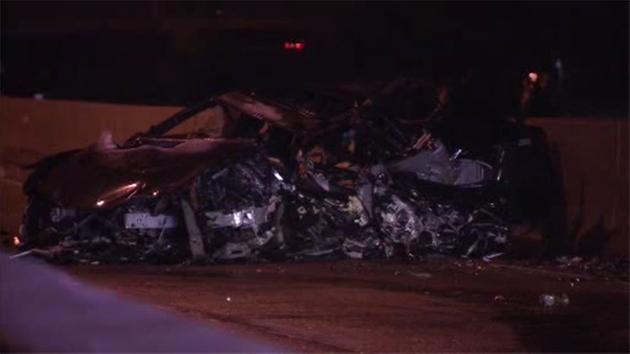
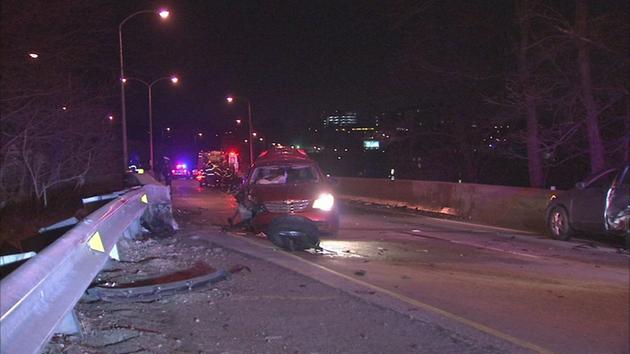
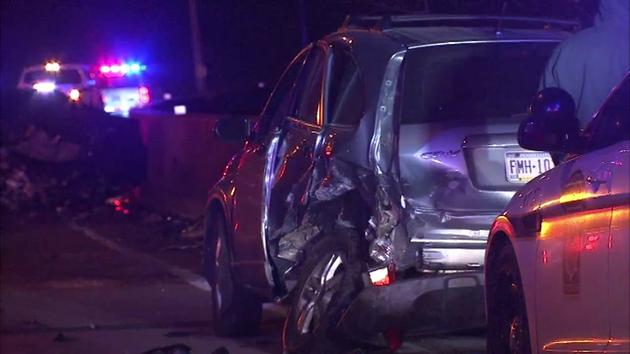

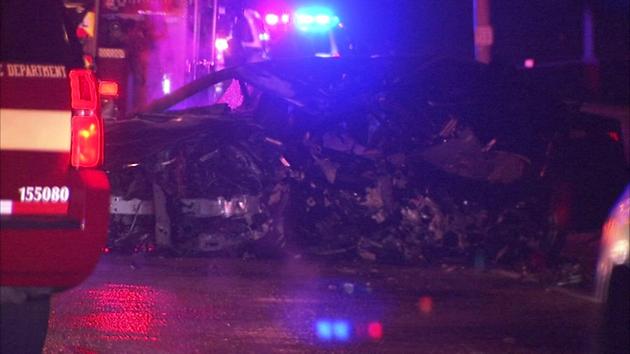
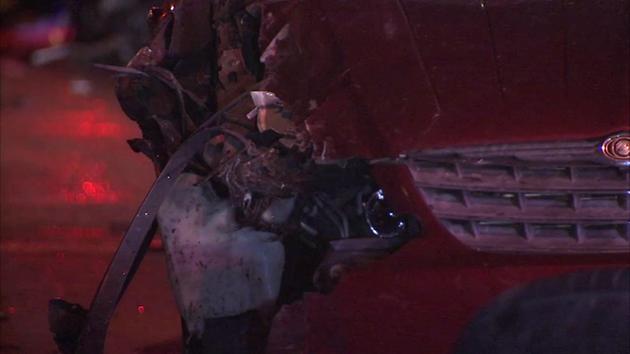











 March is the first-ever National Ladder Safety Month. Each year in the U.S., more than 500,000 people are treated1 and about 300 people die2
from ladder-related injuries. The estimated annual cost of ladder
injuries in the U.S. is $24 billion, including work loss, medical,
legal, liability, and pain and suffering expenses1. Data
analysis from three surveillance systems in 2011 showed that workers who
are male, Hispanic, older, self-employed, work in smaller
establishments, and work in construction, maintenance, and repair
experience higher rates of falls from ladders3. It is evident
from these numbers that ladder-related falls are a serious problem and
that there is a need to reduce the resulting injury and death.
March is the first-ever National Ladder Safety Month. Each year in the U.S., more than 500,000 people are treated1 and about 300 people die2
from ladder-related injuries. The estimated annual cost of ladder
injuries in the U.S. is $24 billion, including work loss, medical,
legal, liability, and pain and suffering expenses1. Data
analysis from three surveillance systems in 2011 showed that workers who
are male, Hispanic, older, self-employed, work in smaller
establishments, and work in construction, maintenance, and repair
experience higher rates of falls from ladders3. It is evident
from these numbers that ladder-related falls are a serious problem and
that there is a need to reduce the resulting injury and death.
 Planning an international trip for spring break? Get prepared to have a safe and healthy trip.
Planning an international trip for spring break? Get prepared to have a safe and healthy trip.











